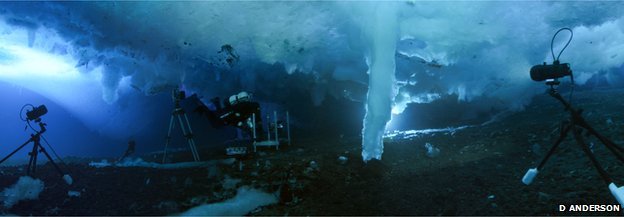
Mr Miller set up the rig of timelapse equipment to capture the growing brinicle under the ice at Little Razorback Island, near Antarctica’s Ross Archipelago.
“When we were exploring around that island we came across an area where there had been three or four [brinicles] previously and there was one actually happening,” Mr Miller told BBC Nature.
“The one we’d seen a week before was getting longer in front of our eyes… the whole thing only took five, six hours.”
The location - beneath the ice off the foothills of the volcano Mount Erebus, in water as cold as -2C - was not easy to access.
“That particular patch was difficult to get to. It was a long way from the hole and it was quite narrow at times between the sea bed and the ice,” explained Mr Miller.
Source: BBC Nature
peacockbearcatasaur reblogged this from mad-as-a-marine-biologist
peacockbearcatasaur liked this
d-luffy-blog liked this
ohlookitsbeige-blog reblogged this from mad-as-a-marine-biologist
whaletaless liked this
mad-as-a-marine-biologist posted this
